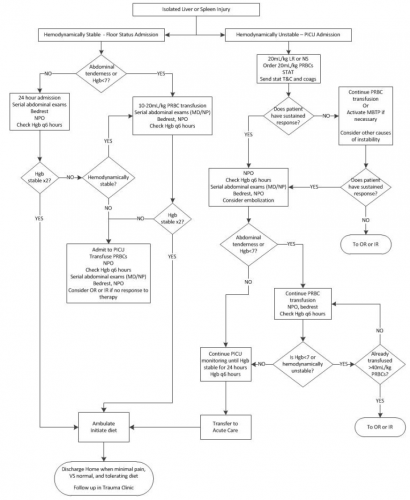Back in the day when I was a resident when a massively bleeding patient came in, we gave crystalloid. And frequently, a lot of it. The books in those days said slam in two liters of saline or lactated Ringer’s solution. It was believed that there was little downside to crystalloid. Consequently, quite a bit of it was given before we ever thought about blood products.
And there were no systems in place to standardize how blood was requested, what was sent, or how much was used. We generally started off with a bunch of packed red cells. Yes, every now and then we might remember to ask for some plasma, and even less commonly some platelets or cryoprecipitate. Ratios? We didn’t really pay attention. In reality, there were probably four red cell packs to one unit of plasma, on average. And the ratio to platelets was so low it was hard to even measure!
By now, we have plenty of data showing that this crystalloid-heavy resuscitation contributed to coagulopathy and poor outcomes. We’ve adopted a more balanced concept of resuscitation, which of course we call “balanced resuscitation.” What does this term mean? Basically, it’s a combination of restricted crystalloid use, more optimized ratios of blood products, and some degree of permissive hypotension in select patients.
Before we dive more deeply into ratios, let’s agree on the nomenclature. You may hear people talking about a 1:1 ratio, or 2:1:1, or even 1:1:2. Which product is which? Always read the paper or text carefully, as there is no real standard here. Typically, if only two numbers are specified, RBCs are first and plasma second. But when three are given, you must determine whether the red cells are first or last. Here are the most common configurations:
- RBC : plasma : platelets
- Plasma : platelets: RBC
Many papers have been written examining the ratio puzzle. Mortality, complications, renal or lung injury, deep venous thrombosis and pulmonary embolism, lengths of stay, transfusion reactions (of all types), and much more have all been investigated.
The most helpful literature covering transfusion ratios are systematic reviews. The main focus seems to be finding the magic ratio of red cells to everything else. The old-time higher ratios (1:?:4) were generally considered to be inferior, so most research has focused on comparing 1:1:1 to 1:1:2. Here are the main factoids, and all keep to the plasma:platelets:RBC format:
- There was no discernible difference in 24-hour or 30-day mortality between groups with ratios of 1:1:1 or 1:1:2
- Patients with a 1:1:1 ratio received significantly more platelets and plasma that the 1:1:2 patients
- Giving cryoprecipitate or fibrinogen concentrate early had no effect on mortality
Although systematic reviews try to make up for shortcomings of individual studies, they introduce their own problems. However, they overall seem to indicate that the “magic” ratio lies between 1:1:1 and 1:1:2. Most centers strive for the former, but due to many reasons (e.g. no thawed plasma, delivery issues) more realistically try to stay under the latter.
Bottom line: Think about the logistics in your own trauma center, and design your massive transfusion protocol so that you can maintain a ratio somewhere between 1:1:1 and 1:1:2. Every MTP activation should be analyzed by your trauma performance improvement process and must review your final ratios. One thing I’m sure of is that we will continue to refine this over the coming years, so stay tuned!
Reference: Optimal Dose, Timing and Ratio of Blood Products in Massive Transfusion: Results from a Systematic Review. Transfus Med Rev 32(1):6-15, 2018.



